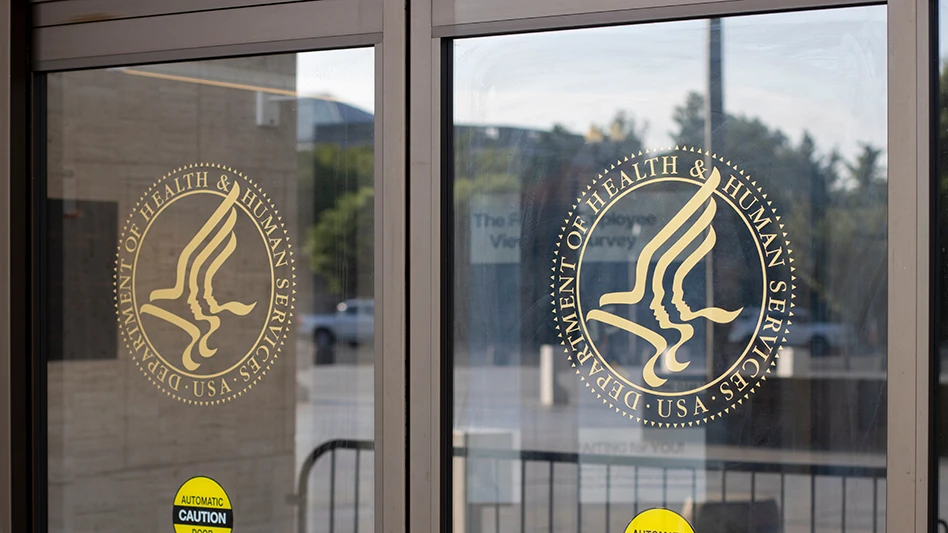
By Lisa Lupo
With the food industry’s technological advances, increased regulatory requirements, and pressures of population growth which are increasing the need for agricultural efficiencies and sustainability, the Bureau of Labor Statistics has projected employment opportunities in agriculture and the food sciences to grow at a rate of five percent into the 2020s. While this percentage is similar to the average of all occupations in the U.S., the industry has the added factor of extensive job vacancies projected because of the number of scientists expected to retire within the next 10 years.
Although this should be good news for the industry, the bad news is that there are not enough prospective employees in the pipeline to fill all the projected openings for those food scientists or even production workers. The additional good news, however, is that the schools — from the elementary to the university levels — are not only aware of the need, but are taking action to educate and interest students in the food sciences and the many opportunities for a career in food production.
In this article, QA explores the issues and what is being done to find solutions before they significantly impact the industry.
INDUSTRY CHANGE. Over the last 25 years, there has been a great deal of change in food culture, science, and policy, said Darin Detwiler, Northeastern University College of Professional Studies assistant dean of graduate academic and faculty affairs. This has increased the need for higher level training in multiple areas of food law and regulation as well as food science. Additionally, the educational programs need to be more focused on the specific needs of the industry and its differences — from large to small and very small businesses; farms to manufacturers and distributors; dairy to bakery and ready-to-eat; etc. “We need to have programs that prepare those people to work at multiple levels in the industry,” Detwiler said.
It is a focus about which Detwiler is passionate, and for which he received a 2016 excellence in teaching award, nominated by students in his Master’s in Regulatory Affairs of Food and Food Industries program who called him an “outstanding and engaging” instructor who “shares an enormous passion for his discipline that he instills in others.”
The Northeastern program is designed to have multiple levels of experiential learning to include case studies, plant procedural elements, food safety or food defense plan writing, business mission statement development, as well as opportunities for internships. Not only do the students conduct research to develop the papers, they submit them to industry personnel. For example, the memo on page 24 is the result a student’s case study on recommendations for GMO labeling, which was submitted to chief executives of major food companies. (The full case study is available here.)
While many of the students are from the industry, most did not come from a food or food science background. “A common thread is that they’ve been in the industry for five, 10, or 20 years. They started off doing X, then someone retired or left, and they took over their position,” Detwiler said. But it didn’t take long for many to realize that they could not move higher without further food science or regulatory education. Others simply wanted a change in position or company.

As it turns out, all except one of his former students has been promoted or taken a higher level job at another company following their graduation from the program.
Detwiler feels that it is the experiential learning of the program that contributes most strongly to the students’ careers, which is substantiated by the fact that it was by showing the portfolio of work they did in the program that effected many of the students’ promotion or hiring.
GLOBAL ISSUES AND INITIATIVES. Following are just a few other initiatives taken by the public and private sectors to address the issues.
1. Too Few Students to Meet Demand. Thousands of jobs in the fields of food, energy, and the environment are going unfilled in the U.S. today. These applied biological disciplines are vital to our national and global security and economy, but graduate too few students to meet current and projected workforce demands. (Michigan State University [MSU])
What is being done. An MSU research team landed a $1 million National Science Foundation STEM scholarship grant to recruit, nurture and graduate students prepared for careers in animal science, crop and soil sciences, forestry, entomology, fisheries and wildlife, food science or horticulture. The cohorts include Lansing School District high school students, Lansing Community College students and MSU students who haven’t declared a major. “Too few students are entering these disciplines — a problem that can be addressed by an effective, multifaceted, experiential and interactive recruitment program that engages students,” said Eunice Foster, MSU crop physiologist and the grant’s principal investigator. “Though many people want to know where their food comes from, there seems to be a disconnect in recognizing that science, technology, engineering and math are integral to the careers associated with food production, processing, packaging and delivery.” (http://bit.ly/2kpwi9s)
2. Unfilled Agricultural Jobs. Each year, approximately 25,000 agricultural jobs go unfilled due to a lack of qualified applicants. Modern agriculture encompasses more than farming, and represents a convergence that demands a variety of skills. (The Ohio State University [OSU])
What is being done. An NCES Statistical Analysis Report (SAR) presents an examination of students’ college attrition from science, technology, engineering, and math (STEM) fields over the course of six years to gain a better understanding of the attrition by determining rates of attrition from STEM and non-STEM fields; identifying characteristics of students who leave STEM fields; comparing STEM course taking and performance of STEM leavers and persisters; and examining the strength of various factors’ associations with STEM attrition. (http://bit.ly/2rbvl8w)
3.Students Leaving STEM Studies. A total of 48% of bachelor’s degree students and 69% of associate’s degree students who entered STEM fields in the U.S. between 2003 and 2009 had left these fields by spring 2009. Producing sufficient numbers of graduates who are prepared for STEM occupations has become a national priority in the United States. (National Center for Education Statistics [NCES])
What is being done. To encourage the pursuit of careers in STEM fields and agriculture, Monsanto awarded scholarships totaling $250,000 to 10 students through the Monsanto Graduate Student Scholarship program. “Many graduate and undergraduate students, especially high achievers from underrepresented communities, are unaware that their career paths could include jobs in agriculture or related industries,” said Steve Mizell, executive vice president of human resources for Monsanto. “These scholarships reinforce Monsanto’s commitment to building an innovative workforce that is able to meet the demands of feeding a growing global population of nine billion people by 2050.” (http://bit.ly/2pG78at)
4. It’s Not Just the U.S. The food and drink industry is the UK’s largest manufacturing sector, with about 400,000 employees, yet it will require 109,000 new recruits by 2022. Prospects.ac.uk
What is being done. Among UK initiatives detailed by Prospects are those of the Food and Drink Federation (FDF) which have included initiatives such as a “Taste Success — A Future in Food” careers campaign encouraging young people, parents and teachers to recognize the opportunities in the industry; an attempt to grow female participation by supporting the government’s “Your Life” campaign and pledging to attract women into STEM careers in food and drink; and the commissioning of Sheffield Hallam University’s BEng/MEng Food Engineering multidisciplinary program designed and developed in conjunction with more than 40 major food and drink companies. (http://bit.ly/2qnpVGz)
While such programs are advantageous to the industry and the students involved, the benefits go well beyond that to impact food safety and public health. With a goal to help students understand not only the many facets of the industry, but also the many levels of concern — of the company, stakeholders, and consumers, “we want our students to know enough to understand regulatory compliance, and we want our students to be able to care through the understanding,” Detwiler said. “I may never see or hear from them again, but I may eat food their company makes.”
The author is Editor of QA. She can be reached at llupo@gie.net.
Taking it to the School
Hands On program gives kids real world lessons on foodborne illness.
By James William Swart
Hands On: Real World Lessons for Middle School Classrooms is an experiential curriculum which improves behavior related to food safety, personal hygiene and food preparation to reduce risks of foodborne illness. Shown to catalyze students’ interest in science, technology, engineering, and math (STEM) programs in later years, this interdisciplinary curriculum is designed to provide classroom teachers with ready-to-use lesson plans that focus on providing students with instruction aligned to state content standards while teaching them the importance of proper handwashing, food cookery, and foodborne illnesses.
Hands On began in 2008 under the guidance of Jennifer Richards of the University of Tennessee (UT) with the support of the USDA and the Grocery Manufacturers Association Science and Education Foundation (GMA SEF). As a middle school teacher prior to attending UT, Richards saw a gap in food safety education programs for 6th, 7th, and 8th grades. She envisioned this program as influencing a previously unreached audience — and influence those students it did.

Hands On is organized into sets of week-long lesson plans that cover state content standards in math, science, social studies, and English/language arts. Within these units, students take part in activities, including inoculating petri plates and observing bacterial growth, modeling cell division, and creating press releases related to disease outbreaks. The lessons and activities are designed to complement what is being taught in the classroom, and to give students a real-world connection to what they are learning.
When measuring student gains from the program, Hands On looks at three categories: total knowledge gain, reported self-efficacy in dealing with issues related to food safety, and attitudes/behaviors in food safety. The data for this analysis were collected from schools that have implemented the curriculum using a pre, post, and follow-up testing structure. Students were assessed prior participation to determine their base knowledge, behavior, and self-efficacy levels. After completing the curriculum, students were given the same assessment. Then, six weeks after the post-assessment, students were given the post assessment again to measure their retention.
Based on analysis of that data, students see an increase in each of the categories. The data also show that these students retain information from the curriculum when tested six weeks after implementation.
As of May 1, 2017, Hands On has impacted more than 55,000 students in 24 states. More than 160 schools have been served by the program, with 44% of teachers choosing to implement the program more than once. Presently, the program provides classroom teachers with all supplies needed to implement the curriculum free of charge. This is possible through GMA SEF funding in collaboration with the Partnership for Food Safety Education.
Hands On will be expanded to all 50 states by 2025 and is being promoted internationally. With this expansion, the curriculum will be revised and aligned to content standards for each new state, but the underlying messages of the curriculum will remain the same. Hands On is essentially a curriculum platform which is being used for a number of topics including road safety and transportation and will soon include a nutrition focused curriculum/module. This new module will focus on understanding the importance of proper nutrition, reading food labels, and being a healthy individual while still tying the content to what teachers are covering in the classroom.
The success of Hands On is heavily dependent on the ability of teachers and students to receive the curriculum and all instructional materials at no cost since classroom teachers often have very small budgets for classroom supplies. At just under two dollars per student, Hands On is an extremely cost effective way to engage future consumers and food scientists. The program relies exclusive on voluntary contributions and federal grants. If you are interested in becoming a supporting partner by making a donation to the program, or if you know of a school district that would like to adopt Hands On, contact handson@utk.edu, or visit www.handsonclassrooms.org for more information.
The author is a Master’s candidate at the University of Tennessee in the field of curriculum development. He is transitioning to the position of Hands On program manager over the next year.

Explore the June 2017 Issue
Check out more from this issue and find your next story to read.
Latest from Quality Assurance & Food Safety
- Kim Heiman Elected to Second Term as President of Wisconsin Cheese Makers Association
- FAO Launches $150 Million Plan to Restore Ukrainian Agricultural Production
- Pet Food Company Implements Weavix Radio System for Manufacturing Communication
- Penn State Offers Short Course on Food Safety and Sanitation for Manufacturers
- USDA Announces New Presidential Appointments
- FDA to Phase Out Petroleum-Based Synthetic Dyes in Food
- IFT DC Section to Host Food Policy Event Featuring FDA, USDA Leaders
- CSQ Invites Public Comments on Improved Cannabis Safety, Quality Standards





